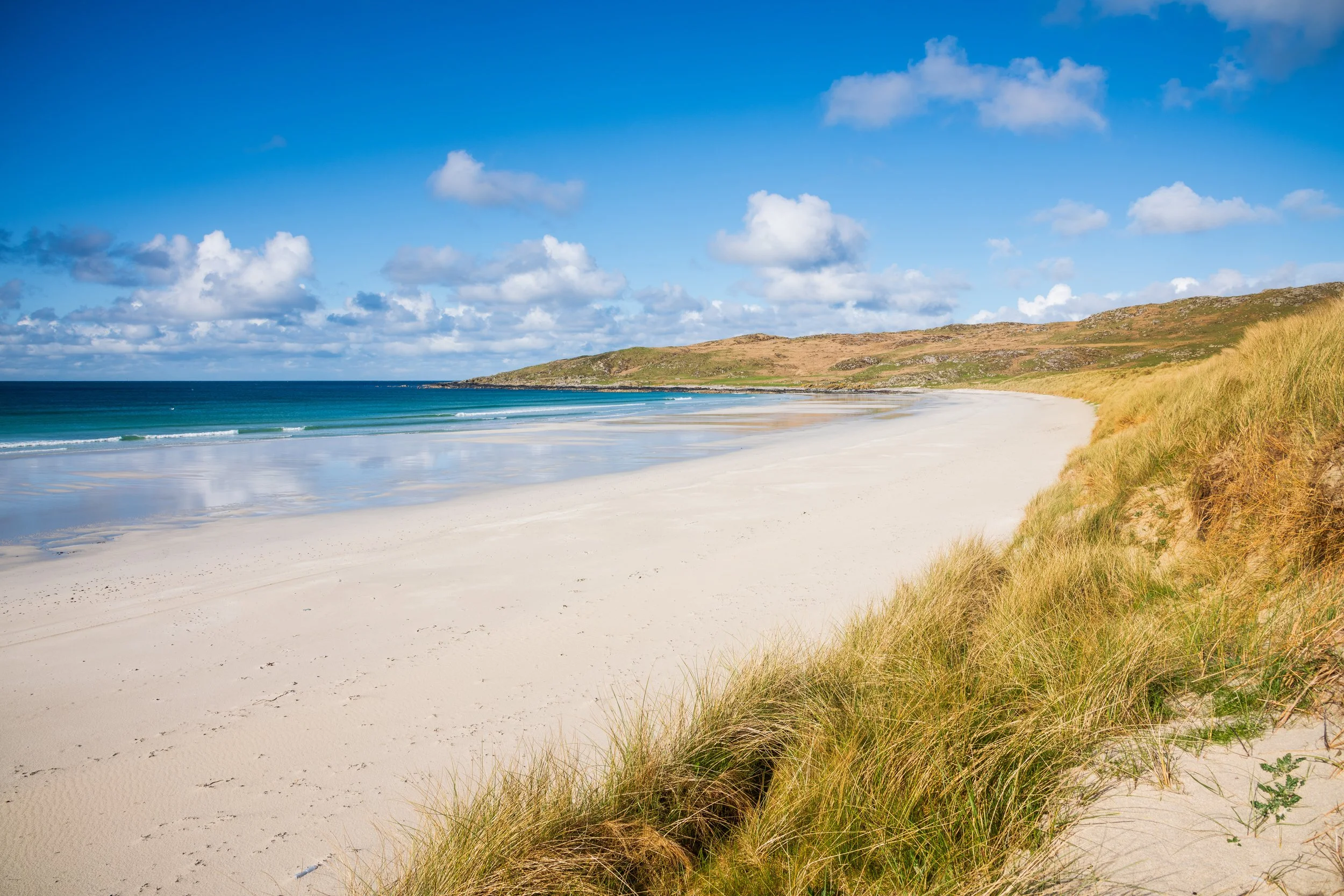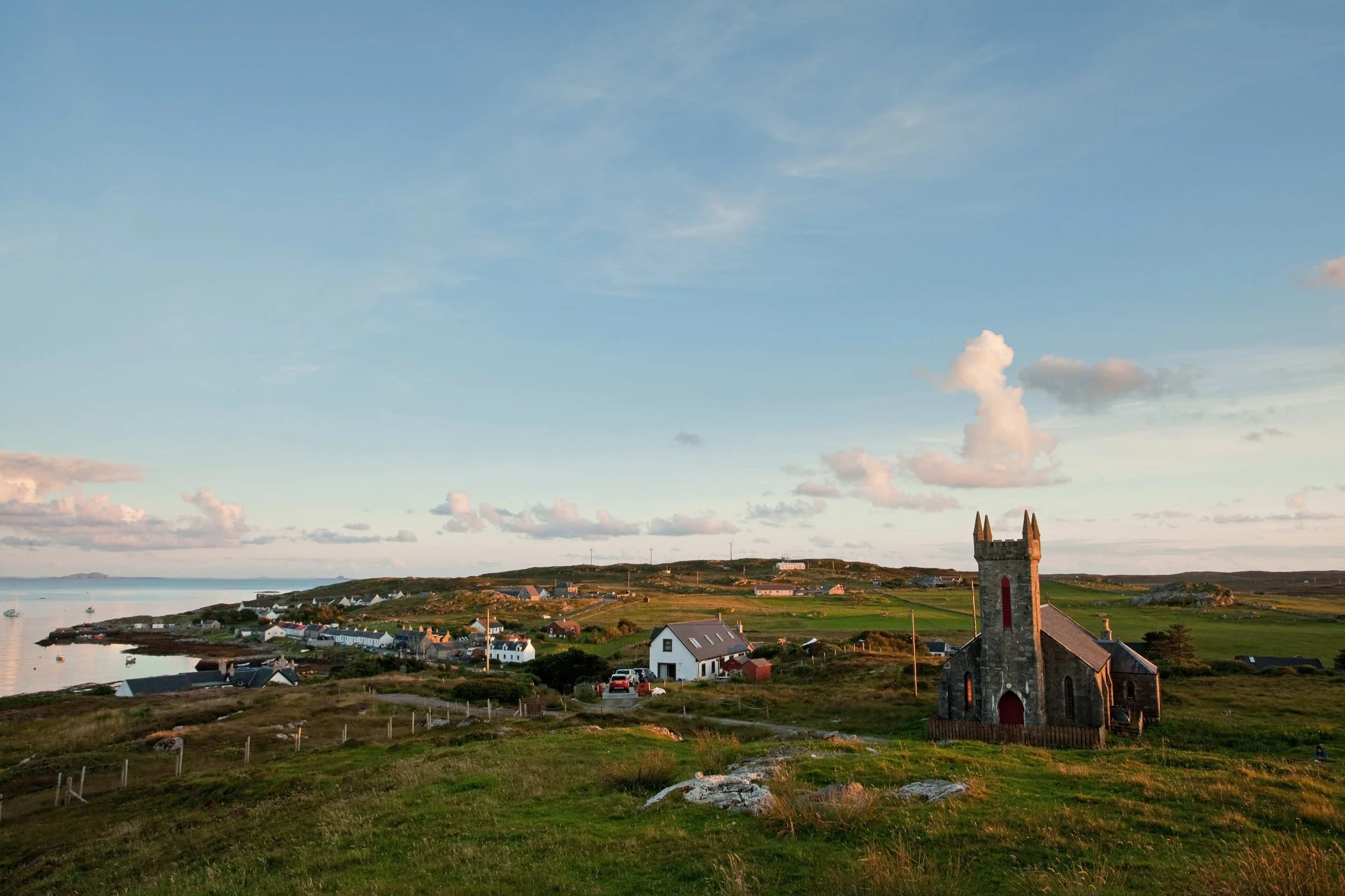Discover the Hebrides: A Complete Guide to the Hebridean Islands
Key Takeaways
The Hebrides are a group of islands off Scotland’s west coast, divided into the Inner and Outer Hebrides
Over 500 islands make up the archipelago, with around 50 inhabited
Travel between the islands is possible by ferry or flight, with regular connections from Oban to Tiree, Coll, and Colonsay by both air and sea - and to Benbecula by air.
From remote beaches and wildlife hotspots to ancient sites and world-class stargazing, every island has something distinct to offer.
Welcome to the Hebridean Islands
The Hebridean Islands - often simply called the Hebrides - are a widespread archipelago off the west coast of Scotland. Known for their rugged coastlines, windswept beaches, and enduring Gaelic culture, they are among Scotland’s most distinctive and beautiful regions.
The Hebridean Islands are divided into two main island groups: the Inner Hebrides, which lie closer to the mainland, and the more remote Outer Hebrides, also known as the Western Isles. Together, they comprise over 500 islands, of which about 50 are inhabited. Each island offers something unique - from dramatic landscapes to rich cultural heritage.
Inner vs Outer Hebrides: What's the Difference?
The Inner Hebrides stretch along the west coast and include islands like Skye, Mull, Islay, Tiree, Coll, and Colonsay. These islands are typically more accessible, with diverse terrain that includes cliffs, lochs, and fertile farmland. They tend to have smaller populations, with close-knit communities and a slightly milder climate than their Outer counterparts.
The Outer Hebrides form a long, narrow chain further out into the Atlantic Ocean. They include islands such as Benbecula, Lewis and Harris, North Uist, South Uist, Barra. The terrain here is wild and open, with long beaches, machair meadows, and expansive moorland.
History of the Hebrides
This part of Scotland has a long and layered history, shaped by ancient settlers, Norse influence, and Gaelic traditions. Archaeological sites across the islands tell stories of early farming communities, standing stones, Iron Age forts and early Christian missionaries.
From the 9th to 13th centuries, Norse rulers left a strong cultural mark, and later the islands became centres of clan life, maritime trade, and Jacobite rebellion. Today, that history is still visible - not just in ruins and monuments, but in the daily life of islanders who continue to preserve local customs and language.
Getting to and Around the Hebridean Islands
You can reach the Hebridean Islands by air or sea, depending on your starting point and which islands you plan to visit.
By Ferry
Ferries operate from several mainland ports, with CalMac Ferries serving most of the major routes. Oban, located on Scotland’s west coast, is the main mainland gateway to the Inner Hebrides, offering both ferry and flight connections. From here, you can reach islands such as Tiree, Coll, and Colonsay, or explore the town itself, which is a popular destination in its own right. Other common departure points include Ullapool, which connects to Stornoway on the Isle of Lewis, and Mallaig, with services to Skye and the Small Isles.
By Flight
For faster and direct journeys, especially to smaller or more remote islands, flights can be both a time-saving and scenic alternative. Hebridean Air Services offers scheduled flights from Oban to Tiree, Coll, Colonsay, and to Benbecula from Stornoway, on the Isle of Lewis. These short flights often take under an hour and offer spectacular views over the coastline and sea. They're particularly useful if you're planning to visit multiple islands or have limited time to explore.
Take a glance at current flight schedules and book your flight with Hebridean Air Services.
Why Visit the Hebrides?
The Hebridean Islands appeal to a wide range of travellers - from solo explorers and nature lovers to families and photographers. The islands offer space, peace, and the chance to connect with landscapes and communities that remain deeply rooted in tradition.
Each island brings something different:
Tiree is ideal for windsurfing, beach walks and open skies.
Coll is a Dark Sky island, making it perfect for stargazing and nature watching.
Colonsay offers scenic walking routes, historical sites and seasonal festivals.
Benbecula, centrally located in the Outer Hebrides, makes a great base for exploring North and South Uist.
Lewis, the largest island in the Outer Hebrides and home to the town of Stornoway, offers ancient sites, dramatic coastlines, and a strong Gaelic cultural identity.
Whether you're looking to relax, explore or experience local traditions, the Hebrides offer the space and diversity to tailor your trip.
What to Do in the Hebrides
Activities across the islands cater to all interests - outdoor pursuits, historical sightseeing, or simply enjoying the calm. Popular experiences include:
Walking and cycling along coastal trails
Spotting seals, puffins, otters and sea eagles
Exploring ancient stone circles, brochs and blackhouse villages
Kayaking, wild swimming and water sports
Enjoying local craft shops, seafood, and traditional music events
For outdoor enthusiasts, camping in the Outer Hebrides is an exciting way to immerse yourself in nature, with scenic pitches by beaches and lochs. For those seeking comfort, there’s a wide range of accommodation options across the islands, from guesthouses to hotels.
Final Thoughts
The Hebridean Islands offer a rare combination of beauty, culture, and connection. From the windswept beaches of the Outer Hebrides to the intimate villages of the Inner Hebrides, these islands invite visitors to slow down, explore and experience something truly authentic.
Whether you're visiting for a weekend or planning a longer adventure, the Hebrides promise more than a destination - they offer a sense of place, heritage, and tranquillity that stays with you long after you leave.







